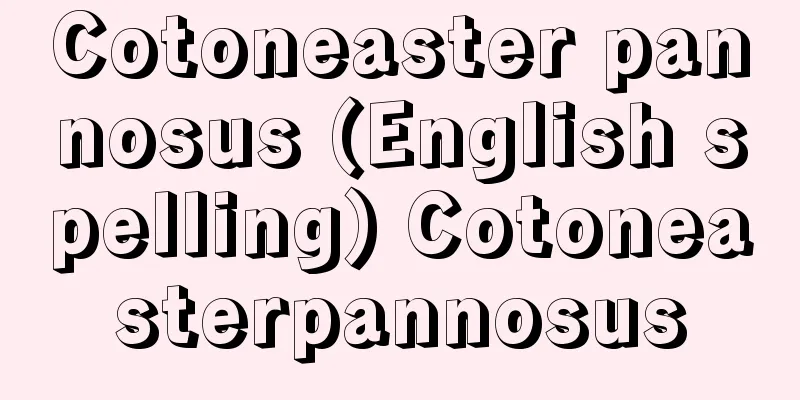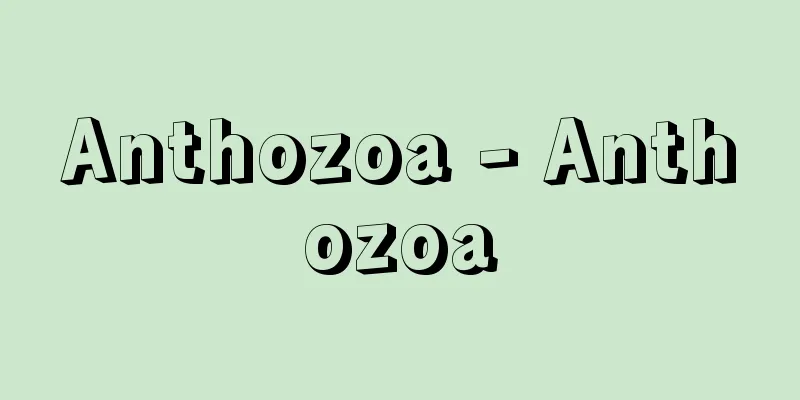Joints

|
In the skeleton of an animal, the bones are connected to each other in various ways, and these connections are called joints. When the connected bones require various movements, they are connected by movable joints, and when they do not require movement, they are connected by immovable joints. When the term "joint" is used in general, it refers to movable joints, and in the case of immovable joints, they are called ligamentous joints, sutures (in the skull), synchondrosis (pubic symphysis, intervertebral symphysis of the spine), etc., depending on the type of tissue between the bones. A diarthrodial joint has a narrow gap between the bones called the joint cavity, and the inner surface of the joint cavity is lined with tissue called synovial membrane. The surfaces of the ends of the articular bones that form the joint are covered with a thin layer of hyaline cartilage (0.5 to 2 mm thick) called articular cartilage, which makes the joint surface smooth. The joint cavity contains synovial fluid, which acts as a lubricant and makes the joint move smoothly. A joint generally has opposing articular surfaces, one of which is convex and called the head, and the other is concave and called the glenoid fossa. The edges of the glenoid fossa contain fibrocartilaginous tissue (such as the labrum of the hip joint), an articular disc that completely bisects the joint cavity (temporomandibular joint, sternoclavicular joint), or a meniscus like a disc (knee joint) that improves the fit of the joint surfaces. Joints are surrounded by connective tissue called the joint capsule, and there are also numerous reinforcing ligaments around the joint that connect the bones to each other, helping the joint's movement functionally. The nature and range of joint movement are determined by the shape of the joint, the joint capsule, and the way the ligaments are attached. There are various ways to classify joints, such as simple joints (joints of two bones) or compound joints (joints of three or more bones) depending on the number of bones involved in the joint, and flexion, extension, adduction, abduction, external rotation, internal rotation, pronation, supination, etc. depending on the type of joint movement, but these movements are performed around the joint axis. A joint axis is a "vertical axis" that passes through the joint and runs in the direction of straightening the two bones, a "perpendicular axis" that is perpendicular to the vertical axis, and a "perpendicular axis" that is perpendicular to both of these axes. Joints move around these three axes. From the perspective of the joint axis, they are divided into three types: uniaxial joints, which perform flexion, extension, and rotation movements around only one axis, biaxial joints, which can bend and extend around two mutually perpendicular axes, and triaxial joints (multiaxial joints), which can bend and extend forward and backward and to the side, as well as rotate. The most common classification of joints is by the shape of the articular surface, i.e., the shape of the head and the fossa. Some joints have shapes that cannot be strictly distinguished, but these include ball-and-socket joints, elliptical joints, saddle joints, hinge joints, pivot joints, and planar joints. (1) Ball-and-socket joints: The head of the joint is hemispherical, the fossa on the other side is shallow, and it is a polyaxial joint with free rotation and the widest range of motion of any joint (shoulder joint). If the fossa is deep, it is called a ball-and-socket joint, and the range of motion is also limited. The hip joint belongs to this category. (2) Elliptical joints: These are biaxial joints with elliptical heads that can bend in two directions but cannot rotate. The temporomandibular joint and the radiocarpal joint belong to this category. The radiocarpal joint is a joint formed between the radius and the two bones of the carpal bones, the scaphoid and lunate, and can bend toward the palmar side, dorsal side, radial side, and ulnar side. (3) Saddle joint: A biaxial joint in which the opposing end surfaces of the bones are saddle-shaped and meet at right angles to each other. The carpometacarpal joint of the thumb (the joint at the base of the thumb) belongs to this type. (4) Hinge joints are uniaxial joints that function like hinges and allow bending in only one direction. Examples of such joints are the interphalangeal joints (joints between the finger bones) and the humeroulnar joints (between the humerus and ulna). (5) Pivot joint The cylindrical head of the joint is the long axis, and the side of the joint is curved so that the glenoid cavity fits into it. It is a uniaxial joint in which the glenoid cavity is fixed and the head is the axis of movement, and it has great mobility. The superior and inferior radioulnar joints between the radius and ulna are pivot joints that perform the supination and pronation of the forearm, and the median axis joint formed between the first and second cervical vertebrae rotates the head. (6) Plane joint: The two articular surfaces are planar and move in a sliding motion relative to each other (intervertebral cartilage). The type and range of joint movement are determined by the type of joint, the shape of the articular cartilage, and the attachment and running of the ligaments and muscles around the joint, so if these conditions are not taken into consideration when repairing or reshaping the joint, functional recovery will not be smooth. The sense of movement of the joint is felt regardless of whether it is active or passive, because there are receptors inside the joint, cartilage, ligaments, etc. that sense the position and movement status by contact with the joint surface. [Kazuyo Shimai] Joint disordersThe most common examples are "arthritis" and "dislocation." Arthritis is classified into various types depending on the cause, with "rheumatoid arthritis" (rheumatoid arthritis) and "osteoarthritis" being treated separately. Traumatic dislocation is most often seen in the shoulder joint, while congenital dislocation of the hip joint is the most common. "Sprains" are commonly seen in everyday life, but "elbow dislocation," which occurs when a child pulls on their hand, is also a partial dislocation of the elbow joint. Joint diseases are always accompanied by impaired joint movement and often cause complaints of joint pain, so tests of the range of motion are performed. In addition, an arthroscope developed in Japan is used for endoscopic examination of joints, making simple surgery possible. Treatments include joint fixation surgery, joint arthroplasty to restore joint mobility, and sometimes artificial joints are used. For detailed explanations of the above, please refer to the respective items. [Takashi Nagai] [References] | | | | | | | | | | |©Shogakukan "> Joint Classification Source: Shogakukan Encyclopedia Nipponica About Encyclopedia Nipponica Information | Legend |
|
動物の骨格は各骨が互いにいろいろな形式で連結しており、その連結を関節という。結合する骨が種々の運動を必要とする場合は可動関節によって結合し、動きを必要としない場合には不動関節によって結合する。一般に関節というときは可動関節をさし、不動関節の場合は、骨間にある組織の種類によって靭帯(じんたい)結合、縫合(頭蓋骨(とうがいこつ))、軟骨結合(恥骨結合、脊椎(せきつい)の椎体間結合)などとよぶ。 可動関節は互いの骨の間に関節腔(くう)とよぶ狭い間隙(かんげき)があり、関節腔の内面には滑膜という組織が張られている。関節をつくっている関節骨の骨端部の表面には関節軟骨とよぶ硝子軟骨(ガラスなんこつ)の薄層(厚さ0.5~2ミリメートル)があり、関節面を平滑にしている。関節腔内には滑液が入っていて、潤滑油の役割をしており、関節の動きを滑らかにしている。関節は一般的には対向する関節面があり、一方は凸面で関節頭とよび、他面は凹面で関節窩(か)とよぶ。関節窩の辺縁部には線維軟骨性組織があったり(股関節(こかんせつ)の関節唇)、関節腔を完全に二分している関節円板(顎関節(がくかんせつ)、胸鎖関節)や円座のような関節半月(膝関節(しつかんせつ))が存在して関節面の適合をよくしている。 関節は関節包とよぶ結合組織で包まれるほか、さらに骨を互いに結合させる補強用の多数の靭帯が関節の周囲にあって、関節の運動を機能的に助けている。関節運動の性質、可能範囲は関節の形態、関節包、靭帯のつき方で決まるといってよい。 関節の分類法にはさまざまなものがあって、関節に関与する骨の数によって単関節(2個の骨の連結)とか複関節(3個以上の骨の連結)を区別したり、関節運動の形式によって、屈曲、伸展、内転、外転、外旋、内旋、回内、回外などに区別するが、これらの運動は関節軸を中心として行われるものである。関節軸とは、関節を通り二つの骨をまっすぐに伸ばした方向に走る「縦軸」と、縦軸に直角の方向の「直角軸」、これら両軸にそれぞれ直角な「垂直軸」を設定したものであり、関節はこの三つの軸を中心にして運動を行う。関節軸からみた場合、屈伸や回旋の運動を1軸のみで行う一軸性関節、互いに直交する2軸を中心にそれぞれが屈伸できる二軸性関節、前後や側方への屈伸のほか、回旋運動も行う三軸性関節(多軸性関節)の三つに分けられる。 関節の分類のうち、もっとも一般的なのは、関節面の形状、つまり関節頭と関節窩の形による分類である。なかには、厳密に区別できない形状の関節もあるが、球関節(臼(うす)関節)、楕円(だえん)関節、鞍(くら)関節、蝶番(ちょうつがい)関節、車軸関節、平面関節などがこれである。 (1)球関節 関節頭が半球状で、他方の関節窩が浅く、回転が自由で、運動範囲も関節のなかではもっとも広い多軸性関節である(肩関節)。関節窩が深い場合は臼関節といい、可動範囲も制限される。股関節がこれに属する。 (2)楕円関節 関節頭が楕円形の二軸性関節で、2方向に屈曲するが、回転運動ができない。顎関節、橈骨(とうこつ)手根関節がこれに属する。橈骨手根関節は、橈骨と手根骨に属する舟状骨・月状骨両骨との間にできる関節で、手掌側、手背側、橈骨側、尺骨側への屈曲を行う。 (3)鞍関節 対向する骨端面が鞍状で、互いに直角にあわさっている二軸性関節で、母指の手根中手関節(母指の付け根の関節)がこれに属する。 (4)蝶番関節 一軸性関節で、蝶番と同じ働きをして、1方向だけの屈曲運動を行う。指節間関節(指骨の間の関節)や腕尺関節(上腕骨と尺骨間)がこれに属する。 (5)車軸関節 円柱上の関節頭が長軸となり、その側面に関節窩がはまるように湾曲している。関節窩が固定して関節頭が運動軸となる一軸性関節であり、可動性も大きい。橈骨と尺骨との間の、上・下橈尺関節は前腕の回外・回内運動を行う車軸関節であり、また、第1頸椎(けいつい)と第2頸椎との間に構成される正中軸関節は頭部を回転させる。 (6)平面関節 二つの関節面が平面的で、互いにずれる運動を行う(椎間軟骨)。 関節運動の形式や運動範囲は、関節の形式、関節軟骨の形態、関節周囲の靭帯や筋のつき方、走行によって決まるため、関節の修復、整形などには、それらの条件を十分に考慮しないと機能回復が円滑にいかない。関節の運動感覚は、関節の内面・軟骨・靭帯などの内部に、関節面の接触によって位置や運動状況を感受する受容器があるため、自動的、他動的運動に関係なく、関節運動を感じる。 [嶋井和世] 関節の疾患代表的なものは「関節炎」と「脱臼(だっきゅう)」である。関節炎は原因によって種々に分類されるが、「関節リウマチ」(リウマチ性関節炎)や「変形性関節症」などは別に扱われる。また脱臼は、外傷性では肩関節に多くみられるが、先天性では「股関節脱臼」がもっとも多い。日常的には「捻挫(ねんざ)」がよくみられるが、幼児の手を引っ張った瞬間におこる「肘内障(ちゅうないしょう)」も肘関節の一部脱臼である。 関節の疾患にはかならず関節の運動障害を伴い関節痛を訴えることが多く、関節可動域のテストが行われる。また関節の内視鏡検査には、日本で開発された「関節鏡」が使われ、簡単な手術も可能となっている。治療としては「関節固定術」のほか、関節の可動性を回復させる「関節形成術」があり、「人工関節」が使われることもある。 以上についての詳しい解説は、それぞれの項目を参照されたい。 [永井 隆] [参照項目] | | | | | | | | | | |©Shogakukan"> 関節の分類 出典 小学館 日本大百科全書(ニッポニカ)日本大百科全書(ニッポニカ)について 情報 | 凡例 |
Recommend
Rasht; Resht
The capital of Gilan Province in northwestern Iran...
Epiphanius - Epiphanius
...Various theories that emphasized only one aspe...
Introduction, development, twist and combination
[1] [Noun] = Kisho tenketsu (introduction, develop...
Social overhead capital
Generally, it refers to public capital stock (the...
Tara - Tara (English spelling) codfish
A general term for fishes belonging to the order ...
Intensity interferometry
...In the 1970s, attempts were made to revive thi...
Ishinomaki Mountain
Located in the northeastern part of Toyohashi City...
Skaergaard intrusion - Skaergaard intrusion
A layered intrusion on the Skaergat Peninsula in e...
Ukebayashi - Ukebayashi
…The term “hayashi” is now often used in the narr...
Acute circulatory failure
...The word shock is widely used and familiar in ...
Zemlinsky, Alexander
Born October 14, 1871 in Vienna, Austria [Died] Ma...
Kahara Domain
⇒ Kokura Domain Source: Kodansha Encyclopedia of D...
Minami Shinano [Village] - Minami Shinano
A village in Shimoina County, southern Nagano Pref...
seaweed
…seaweed is a type of marine plant that is non-pl...
Ecole Parnassian - Ecole Parnassian
…This is a translation of the term l'école pa...









